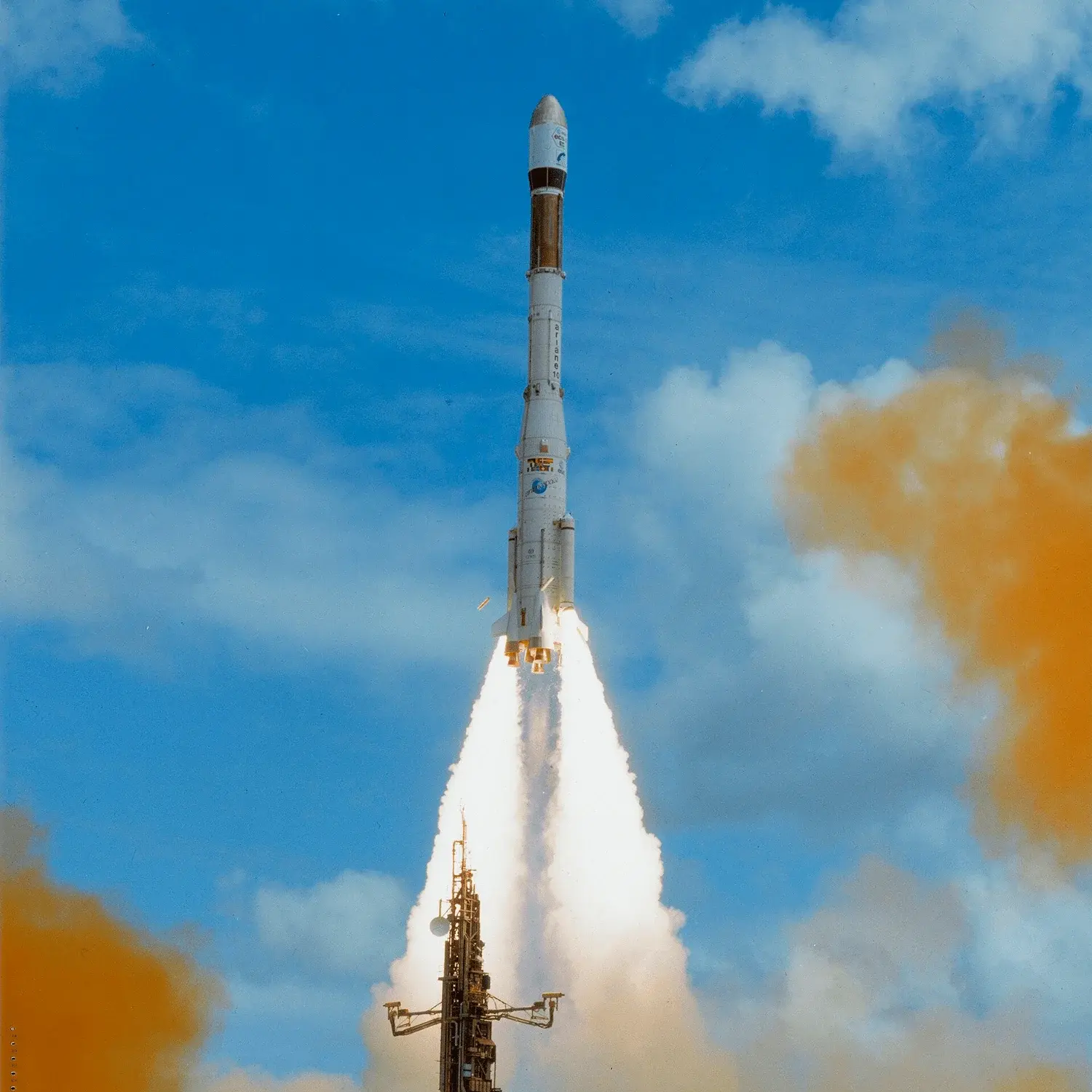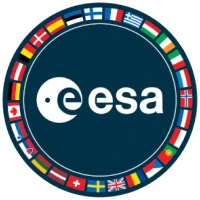Eutelsat-1 F2, Télécom 1A
Launch Success
Liftoff Time (GMT)
13:32:00
Saturday August 4, 1984
Mission Details
Launch Notes
Maiden flight of Ariane 3. Flight V10.
Eutelsat-2
In 1979 ESA agreed to design, build, and launch five ECS (European Communication Satellite) spacecraft to be assumed by Eutelsat after passing initial on-orbiting testing. At that time the name of each spacecraft was changed to Eutelsat 1-F1, Eutelsat1-F2, etc. Of the five ECS spacecraft, four were successfully launched (1983, 1984, 1987, and 1988) and transferred to Eutelsat. ECS 3 was lost in an Ariane-3 launch accident in 1985. As noted previously, the ECS spacecraft was derived from the OTS vehicle but with an initial mass on station of approximately 700 kg. The payload included twelve (including two spares) 14/11 GHz transponders with 20 W output power for a capacity of 12,000 telephone circuits or 10 television channels. Two solar arrays with a span of 13.8 m provided 1 kW of electrical power to the 2.2 m by 2.4 m spacecraft bus. With an anticipated working life of up to seven years, at the end of 1994 three ECS/Eutelsat 1 spacecraft were still operational at 21.5 degrees E, 25.5 degrees E, and 48 degrees E, although Eutelsat 1-F1 offered limited service due to its inclination of more than 4.5 degrees. Eutelsat 1F2 (ECS 2) was retired in December 1993.
Geostationary Transfer Orbit
1 Payload
1,158 kilograms
Télécom 1A
The first Télécom spacecraft, Télécom 1A, was launched by an Ariane booster on 4 August 1984. Operated by France Telecom under government sponsorship, Telecom satellites service both civilian and military users through twelve active and five reserve transponders operating at 6/4 GHz (four transponders), 14/12 GHz (six transponders), and 8/7 GHz (two X-band transponders). The last units provide the Syracuse (Systeme de Radio Communications Utilisant un Satellite) secure military channels for the French Ministry of Defense. Télécom 1 satellites were designed and manufactured by Matra with the communications package supplied by Alcatel Espace. At the start of its 7-year design life, each Telecom 1 had a mass of approximately 700 kg and an initial electrical power capacity of 1.2 kW, supplied by two narrow solar arrays with a total span of 16 m. The spacecraft bus was derived from the earlier ECS program in which Matra was a subcontractor to British Aerospace. A total of three Telecom 1 satellites were launched (1984, 1985, 1988). Only Telecom 1C remained operational at the end of 1994 and was stationed at 3 degrees E after being moved from 5 degrees W in the Fall of 1992.
Geostationary Transfer Orbit
1 Payload
1,196 kilograms
Launch Site
Stats
Ariane 3
1st
Mission
1st
Mission of 1984
European Space Agency
2nd
Mission
3rd
Mission of 1984
1984
81st
Orbital launch attempt

